The Essential
DEHYDRATOR
From Dried Mushroom Risotto to Grilled Tuna with Papaya Chutney,
More Than 100 Recipes Bursting with Fresh Flavor
SUSAN PALMQUIST and JILL HOUK

Dedication
To my mother, Donna Yule, who taught me to cook at the age of ten and encouraged me to become a professional chef.
Jill Houk
Introduction
Welcome to the wonderful world of dehydration. Not only is it one way that food can be preserved for later enjoyment, but its going to get you thinking about a new way of cooking! Youll find yourself using such things as dried cherries, papaya, and even seafood. Dehydrated food can be stored for a long time, saving you money and shelf space, and it can add new and exciting flavors to your dishes.
Once you begin preserving food this way, its tough to stop because you see so many possibilities. Before you know it, its a new hobby. Youll also find that you can use a dehydrator for other things besides drying foods. You can make your own yogurt or use the dehydrator to get homemade bread to rise. How cool is that? You can make homemade granola and energy bars at a fraction of the cost of store-bought onesplus, youll know whats in them. And if youre budget-minded, you can dry leftover foods for long-term storage. The possibilities are endless!
WHAT WILL YOU FIND IN THIS BOOK?
To kick things off, well explain how dehydrating works and what to look for when you buy a machine. Youll also learn how to prepare foods for dehydration. Best of all, well guide you through the steps needed to rehydrate them so theyre ready for eating or using in recipes.
Next, well take you through the process of dehydrating vegetables, fruits, meats, fish, herbs, and dairy products. Finally, in the last part of this book, youll find gourmet recipes: everything from appetizers to main dishes to desserts. These recipes will have you rethinking dried foods. Theyre for dishes that you can find in some of the top restaurants in the country, yet easy enough for the at-home cook to put together any night of the week.
Okay, roll up your sleeves, turn on the dehydrator, and lets get started!
PART I
Learn the Basics
In this section youll find everything you need to know about dehydrating foods. Even if youve never dried something before or never used a dehydrator, dont worry because by the time you get to the end of this part, youll be an expert.
CHAPTER 1
What Is Dehydration?
Not only have humans been hunting and gathering food since time began; weve also been preserving it. Theres nothing new about prolonging the shelf life of the foods we grow or buy. By drying foods we ensure theres always something available in the cupboard thats good and nutritious to eat. If youve never thought about drying foods before, once you discover how fun it is you may never go back to canning or freezing food again.
Theres an excellent chance that one of your ancestors used to dry things like fruits and vegetables. In fact, its the oldest method of preserving food. Early civilizations harnessed the sun and wind to dry berries, roots, and even grasses. Native American tribes and early American settlers dried foods in order to survive both droughts and harsh winters.
Dehydration might sound complicated, but the process is an easy one. Foods have high water content. When you dry food you remove most of this water, which stops the growth of organisms such as yeast, enzymes, and bacteria, all of which lead to spoilage. Fruits and vegetables consist of about 8095 percent water and meats are 5075 percent water. Dehydration takes their water content down to around 10 percent while leaving most of the full nutritional value of the food intact. Dehydration also acts as a natural food preservative.
WHY DEHYDRATE?
But, you may be saying, what about canning? What about freezing? Whats wrong with these methods of preservation? Here are some reasons why many people choose drying over the other methods of food preservation.
- Less time and skill required. If youve ever tried canning and given up because things didnt turn out as planned, take comfort: Dehydrating foods is a lot easier and less time consuming. Even if youve never done it before, dehydrating is a skill you can quickly learn and, indeed, become an expert at. And lets be honestwho really wants to spend time canning foods in the middle of summer when your kitchen already feels as if its 110F? Using a dehydrating machine produces very little heat so you wont lose your cool even if its 90F outside and youre running the machine all day.
- Less storage space needed. The era of living in oversized houses is gone, and these days many of us have moved into smaller homes. Maybe your grown children have moved back with you or your familys had a recent young addition. Either way we need to make the most of the space we have. The last thing we want to do is fill shelves with canned foods or even a chest freezer taking up valuable feet in the basement or garage. Dehydrating shrinks foods down to one-tenth of their original size, so a pound of carrots can easily fit into a small jar. If you have a small kitchen or limited storage space, dehydration is for you.
- Capture flavor when its at its freshest. One of the best things about summer is the abundance and variety of produce. However, a major drawback is when its hot and humid the food spoils quickly and you can only eat so much of it. Dehydrating allows you to have the best of both worlds.
- Make preservation pay off. We all love to eat something tasty and sweet in between meals. When you dehydrate fruits, their flavors not only become more concentrated but they get sweeter and therefore make the ideal snack for both kids and adults.
- Derive maximum nutrition. Youve heard it over and over again; turn on the TV and theres some nutritionist telling us to eat five servings of fruits and vegetables a day. We know it makes sense but sometimes its not easy to squeeze them in. You can solve the problem by having some dried fruits to throw on your breakfast cereal or in that brown-bag lunch. Drying foods as soon as you bring them home seals in all their flavors, colors, and essential nutrients. Many people think its as good as eating the food fresh.
- Enjoy preservative-free food. If youre a label detective, youll know that even a bag of apricots can contain ingredients that warrant an advanced degree in chemistry to decipher. Dry your own foods and youll know whats in them every time.
- Save money. Watching your food budget? With the continual increase in prices at the supermarket, who isnt worried about inflation and how to feed your family? Youll be a cool penny-pincher when you become an avid dehydrator. When food is abundant, its at its lowest price and you can snag a bargain. Its a great time to preserve and store all types of foods for later use when prices go higher.
- Save money on preserving and equipment. Using an electric dehydrator will cost you half as much as canning, and almost seven times less than freezing. And just think of the money youll save because you no longer need jars and a supply of new lids every year.

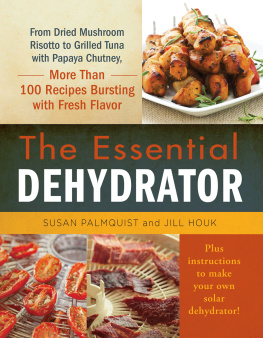
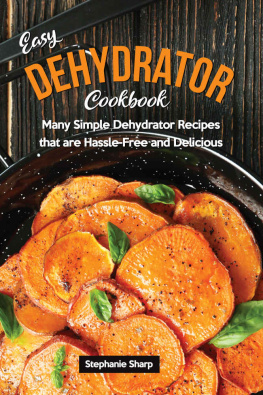


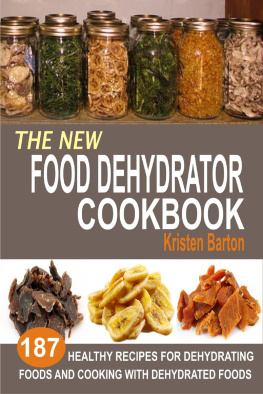

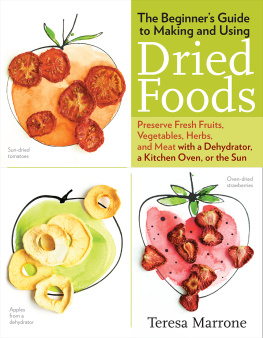
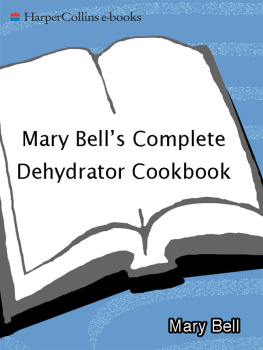
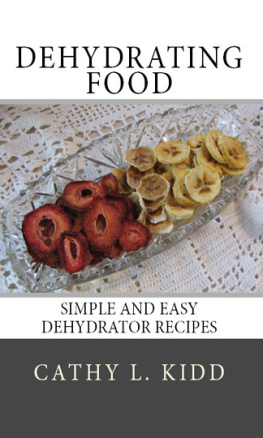
![Tammy - The ultimate dehydrator cookbook : [the complete guide to drying food, plus 398 recipes, including making jerky, fruit leather, and just-add-water meals]](/uploads/posts/book/102970/thumbs/tammy-the-ultimate-dehydrator-cookbook-the.jpg)
![Ferguson September - The ultimate dehydrator cookbook: [the complete guide to drying food, plus 398 recipes, including making jerkey, fruit leathers, and just-add-water meals]](/uploads/posts/book/85869/thumbs/ferguson-september-the-ultimate-dehydrator.jpg)

